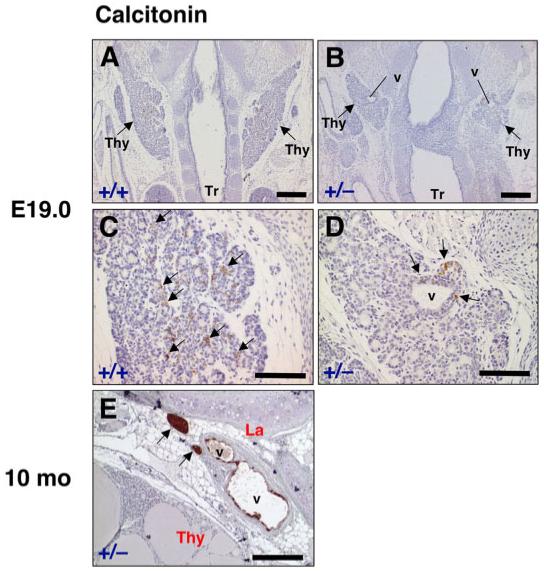Fig. 6.

Calcitonin expression in the thyroid of wild-type and T/ebp-heterozygous mutant mice. A-D: Frontal sections of embryonic day (E) 19.0 embryos from wild-type and T/ebp-heterozygous mice were subjected to calcitonin immunostaining. Arrows point to bilateral thyroid lobes (Thy). Tr, trachea. Calcitonin expression is shown in brown. A,B: Cranial is up. T/ebp-heterozygous mutants always form vesicular structures in bilateral thyroid lobes (v in B), whereas the vesicular structure never appears in wild-type (A). C,D: Higher magnification of the same section shown in A and B, respectively. In wild-type, calcitonin-positive cells are diffusely disseminated into the thyroid lobe (C, arrows), whereas in T/ebp-heterozygous mutant, calcitonin expression is found only around the vesicular structure (D, arrows). E: Immunostaining for calcitonin on a thyroid section from 10-month-old adult T/ebp-heterozygous mutant. Dorsal is right. Vesicular structures persist between the thyroid lobe (Thy) and the larynx (La). Calcitonin is expressed in some cells lining the vesicles and strong expression found in clumps of cells localized in the vicinity of the vesicles (arrows). Scale bar = 300 μm in A,B, 100 μm in C,D, 200 μm in E.
